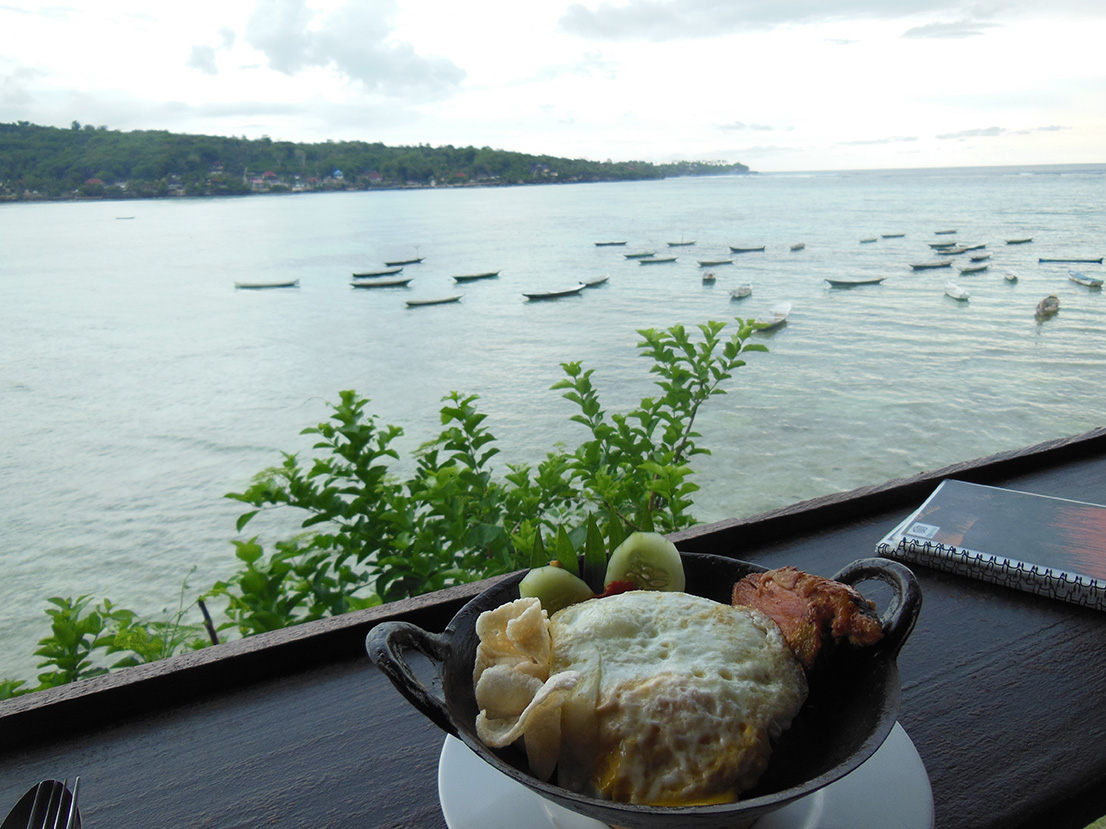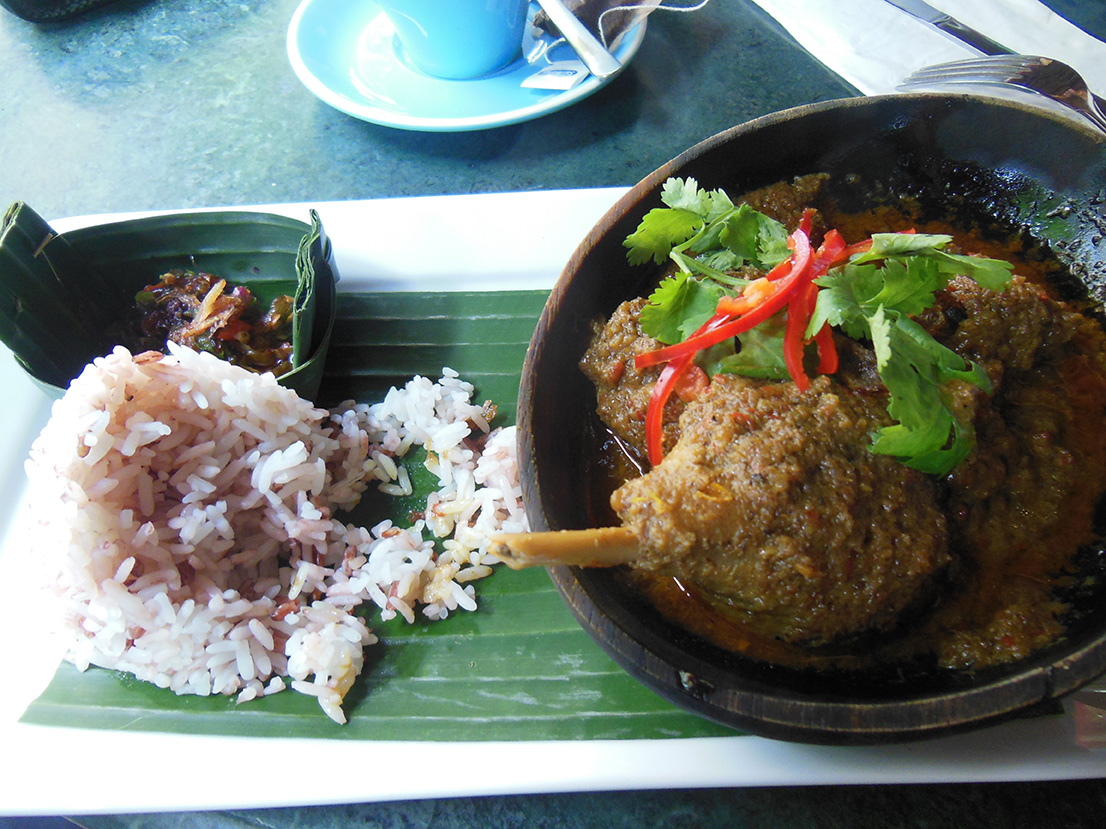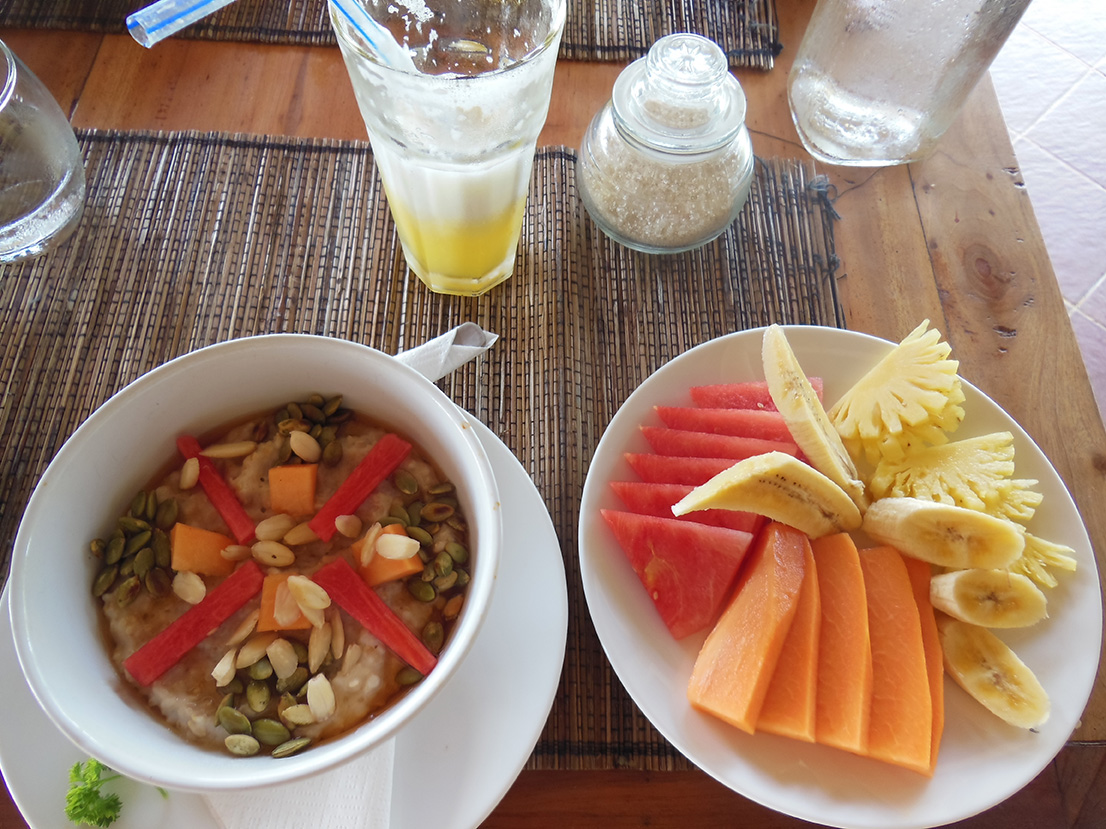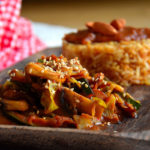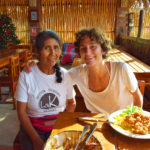I’m in love with Asian cuisine, beyond the Mediterranean one. The only ‘problem’ is that I’m Italian, I learned the tricks of my family’s Italian cuisine (grandmother, mom, and aunts); but I do not know anything (or almost) about Asian cuisine.
Asian food is very easy to like because it hits your mouth very differently than European food does. In European food, there may be two things to hit – maybe sweet and salty, maybe salty-savory, but Asian kind of works around, plus you have that distinct flavor that’s usually working in Asian food.
The idea of Indonesian feeling
In the last few years, more and more I have the feeling and enthusiasm to travel to Asia. No matter where, as long as it is in Asia. Last November, I have spent three weeks in Bali and Lombok islands in Indonesia.
Here the mix of flavors looks so natural and straightforward. But when it is my moment to replicate the dish….well…it does not seem so simple anymore. It’s not in my DNA, but I want to make it mine. Fresh and straightforward Asiatic kitchen.
Looking at those pictures, you can imagine why I want to learn this way of cooking. It is more like learning the culture, the people and the way how they live than just learning how to prepare a specific dish.
After being in Bali, the need to travel to other Indonesian neighbor countries is getting bigger and bigger.
Indonesia in my kitchen
I feel fortunate to live in the Netherlands. All of you know that Indonesia was one of the Dutch colonies until 1949. The reason why there is a lot of Indonesian cuisine influence in Holland. In Rotterdam, I find easily all ingredients that I need to prepare a Balinese dish.
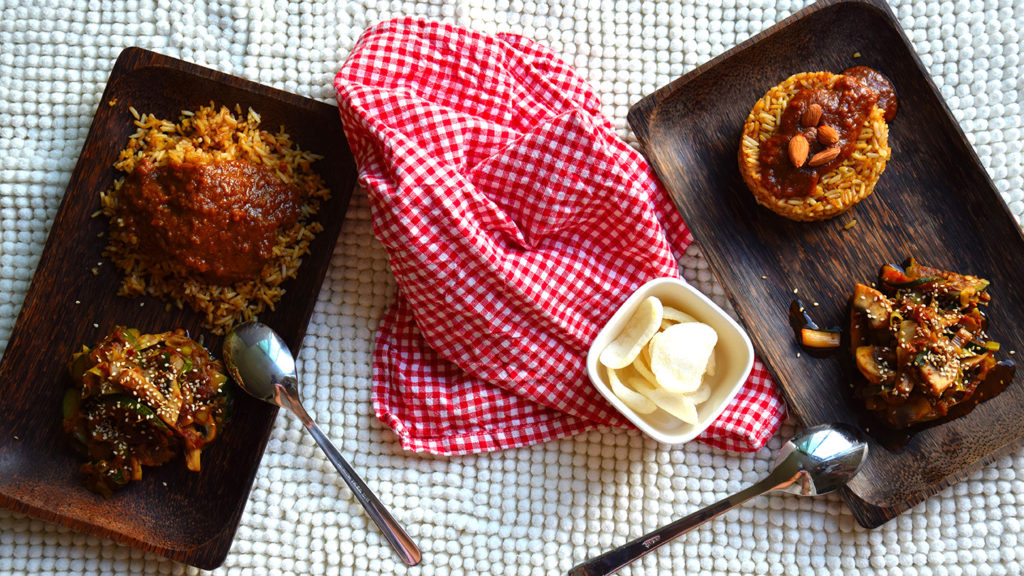
This is one of my first dish that I prepare with the Balinese sauce (for the vegetables) and pinda sauce for the rice.
Get the recipe ↓
Indonesian vegetables in pinda sauce
Print ThisIngredients
2 cups basmati rice
3 cups water
2 onions
Extra virgin olive oil
Salt
1 Courgette
500 g mushrooms
Sesam seeds
2 Garlic
1 onion, finely chopped
1 tbsp sunflower oil
1 garlic clove, finely grated
about 1/2 cm fresh ginger, finely grated
3 tbsp kecap manis (or soy sauce)
1/2 cup coconut milk
1 stalk of lemongrass, bruised
2 kaffir lime leaves
1/2 cup chunky peanut butter
1/4 cup candlenuts, ground finely in a food processor
Instructions
Rice
- Using a strainer, rinse the rice under cold, running water.
- Boil water in a pot, measure out 3 cups of boiling water and pour over the rice.
- Turn down the heat to just above it’s lowest setting and let the rice cook for 15 minutes undisturbed.
- Remove the pot from heat. With the lid still on and let the rice steam another 5 minutes.
Vegetables:
- Wash the vegetables (mushrooms and courgette).
- Chop them in small cubes.
- Cook them for about 15 minutes with olive oil, onion, and garlic.
- Turn off the fire and add sesam seeds.
Pinda sauce:
- Fry the onion in the oil in a saucepan over a medium heat.
- Once the onion has softened and browned slightly, add the ginger and garlic, the peanut butter and the ground candlenuts.
- Add the kecap manis, the coconut milk, the lemongrass, and the lime leaves, and bring to a simmer. Cook for about 10 minutes.
- Now add the sambal and taste for seasoning. If you prefer a spicier sauce, add more sambal or more keep many if you prefer it saltier.
- If the sauce has thickened too much at this point, add some warm water. Fish out the lemongrass and lime leaves and give the sauce a quick whisk before serving.
Notes
If you can’t find kaffir lime leaves, substitute with lime peel.


